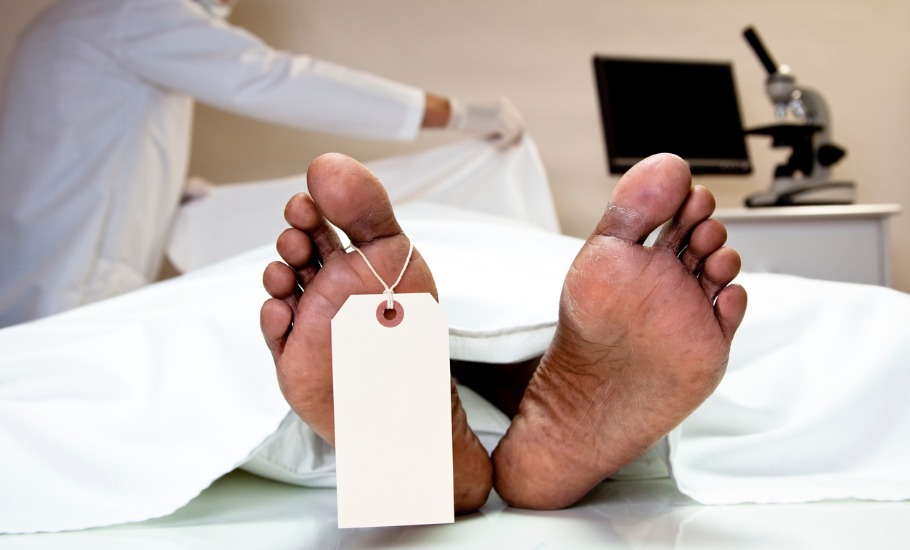
Odisha train tragedy: State facing morgue crunch as unclaimed bodies pile up

Odisha is facing a morgue crunch as a large number of unclaimed bodies from Balasore’s triple train accident have piled up at its mortuaries.
Unable to cope with the large numbers, the Odisha government has shifted 187 of them to Bhubaneswar from Balasore. However, space crunch in Bhubaneswar too is making the situation tough for morgue administrators. While 110 bodies were kept at the AIIMS Bhubaneswar, the remaining have been sent to Capital Hospital, Amri Hospital, Sum Hospital and some other private facilities.
“It is a real challenge for us too, to preserve the bodies here as we have a facility to keep a maximum of 40 bodies,” an official of AIIMS, Bhubaneswar, told PTI. Additional arrangements were made at the Anatomy department, he said.
Also read: Odisha train tragedy: Why was Coromandel Express’ Point 17-A set for the loop line?
Union health minister steps in
The authorities at AIIMS, Bhubaneswar have procured coffins, ice and formalin chemicals to preserve the bodies till they are identified. Sources said state government officials on Saturday drew the attention of Prime Minister Narendra Modi towards the problems they are facing in preserving the bodies during his visit to train accident site on Saturday. “It is really difficult to keep bodies in these hot weather conditions,” the official said.
Sources said the prime minister called up Union Health Minister Mansukh Mandaviya from the accident site itself and asked him to make arrangements at AIIMS, Bhubaneswar, for the preservation of these bodies. Mandaviya immediately rushed to Bhubaneswar overnight and held several meetings in the state capital.
Odisha Chief Secretary PK Jena said the bodies were brought to Bhubaneswar in 85 ambulances on Saturday and another 17 bodies reached here on Sunday. “All bodies have been accommodated in cold storage arrangements (due to shortage of morgues),” Odisha’s Health and Family Welfare secretary Shalini Pandit told PTI.
Challenge to identify bodies
Admitting that identification was a major challenge for the administration as the victims hailed from different states, the chief secretary said the state government has uploaded the details of the passengers on three websites of the Special Relief Commissioner (SRC), Bhubaneswar Municipal Corporation (BMC) and Odisha State Disaster Management Authority (OSDMA). Lists and photographs of deceased passengers are also uploaded on the websites to facilitate identification.
Stating that the photographs of the deceased in the Balasore train accident are being posted only to facilitate identification, the chief secretary said keeping in view the nature of the accident, the images posted are too disturbing. “Nobody can or should reproduce or publish or in any way the images without the prior written approval of the Special Relief Commissioner, Odisha”, a senior official said. “The bodies are mutilated … I came across just head of a human being and no other body parts to go with it,” one of the doctors said.
Also read: Odisha train crash cause identified, normal services to be restored by Wednesday: Rail minister
Control room set up
Meanwhile, a control room has been set up in the office of the Bhubaneswar Municipal Commissioner’s office. People can get information about the bodies and help in their identification by contacting this office. At least 288 people were killed and over 1,100 injured in the triple train accident in Balasore.
Three trains Shalimar-Chennai Coromandel Express, Bengaluru-Howrah superfast and a goods train were involved in Friday’s accident, now being described as one of India’s worst train accidents. The Coromandel Express crashed into a stationary goods train, derailing most of its coaches at around 7 pm on Friday.
A few coaches of Coromandel toppled over the last few coaches of the Bengaluru-Howrah Express which was passing by at the same time. Investigators are looking into possible human error, signal failure and other possible causes behind the triple train crash.
(With agency inputs)

